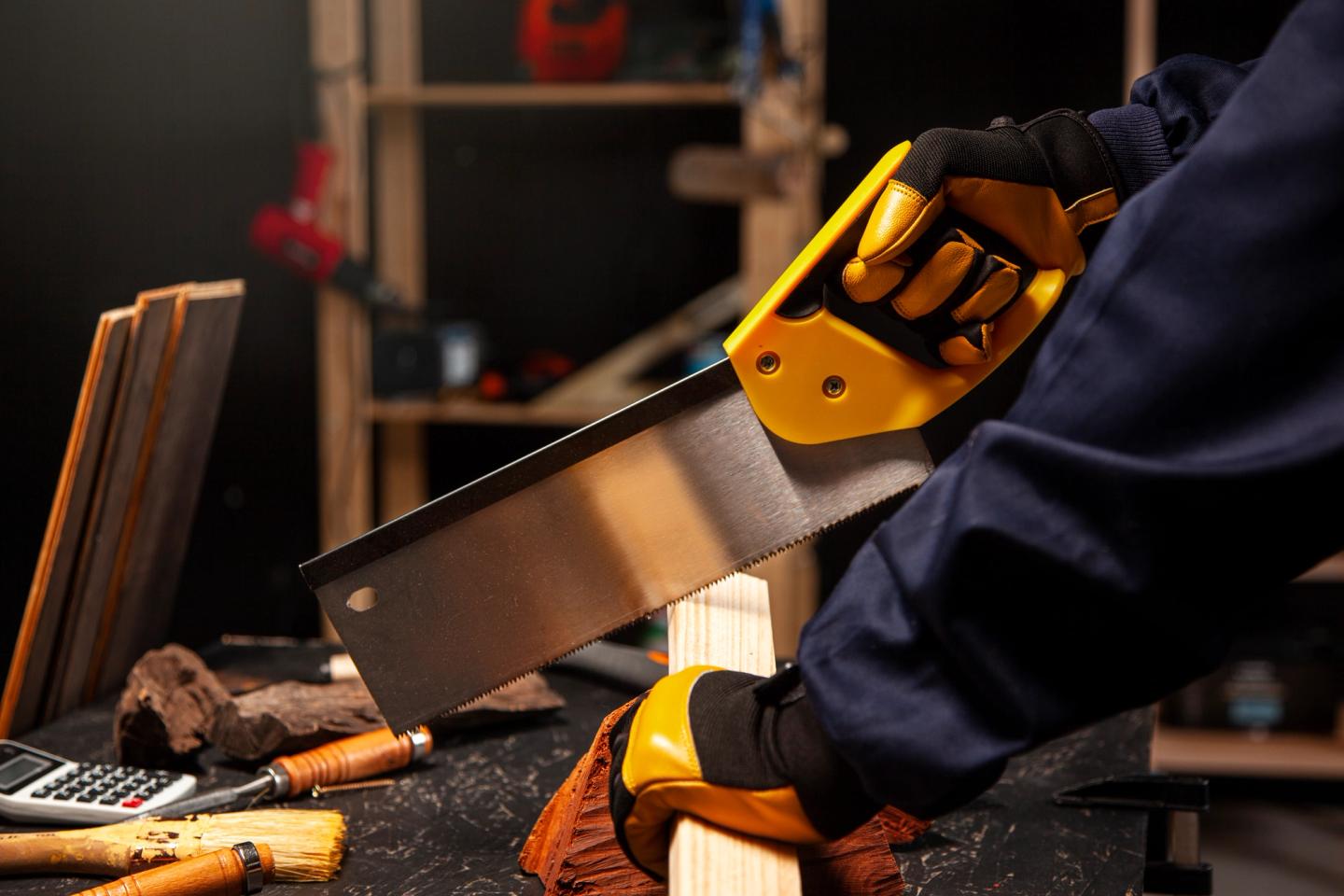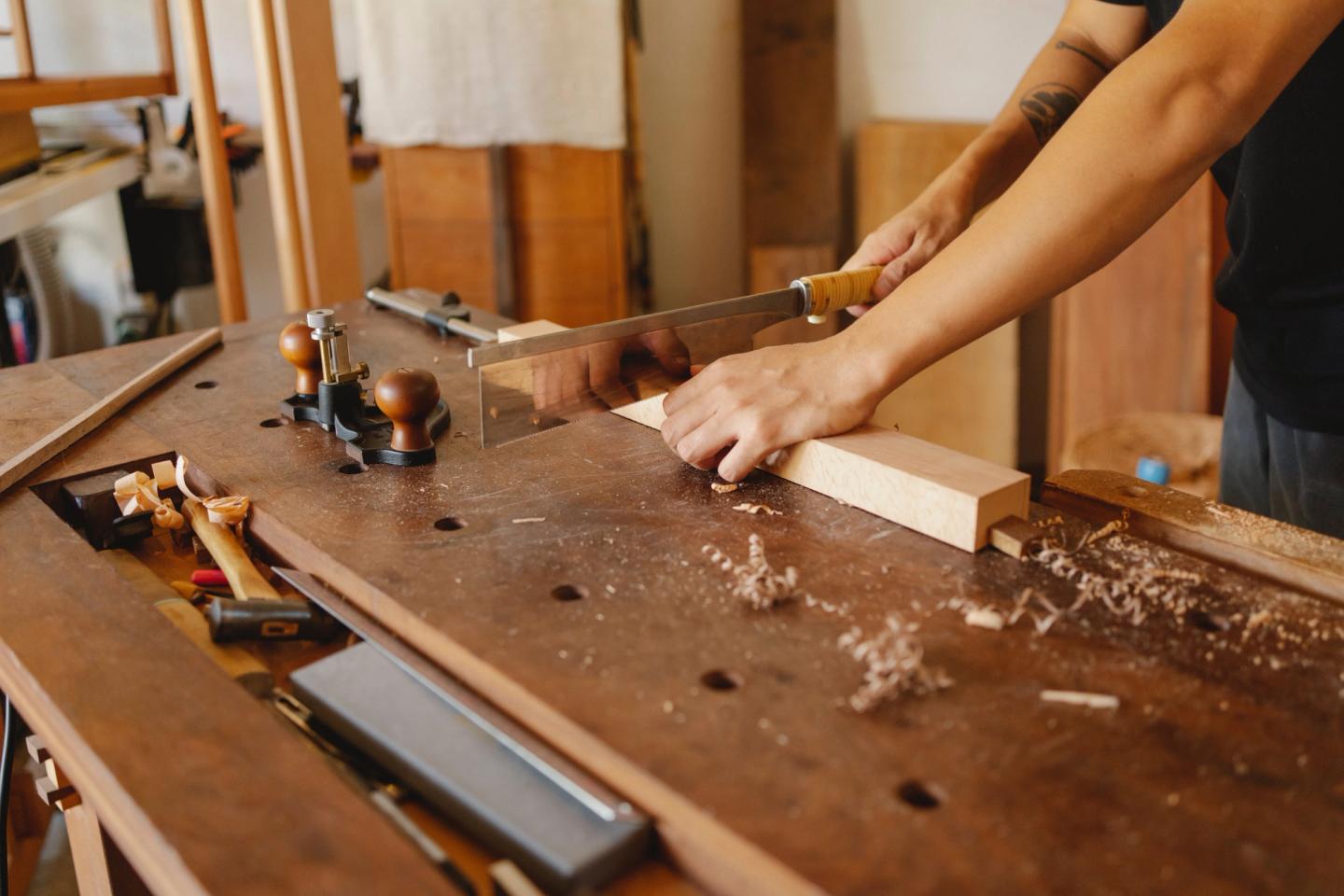If you find that your saw isn't cutting like it used to, it's highly likely that the blade needs sharpening. Keeping your saw blade sharp is important for getting the best results from your tool so here's some tips on how to keep your saw blades sharp and how to maintain them.
Why Do I Need to Sharpen My Saw Blade?
If your saw blade is dull, it will give you a cut with a rough finish. The cutting speed will also decrease as it'll take more effort to get through materials which will cause fatigue. Keeping your saw blade sharp means you'll always get the best cut from the tool. Sharp blades mean that the tool's cut will always be smooth, clean and precise & you won't have to use too much effort to make the cut.
How to Sharpen Your Hand Saw Blades
- First, you'll need to clean the blade. Gently use a wire brush to get rid of any rust and then give the blade a wipe down with a dry, clean cloth.
- Next, you'll need to clamp your handsaw in to a saw vice to help keep it secure and tight - the blade should not be able to move when being worked on. Make sure the teeth are pointing upwards also.
- Once your saw blade is secure in the vice, take a look and see if any of the teeth are jagged. If they are, use a saw set tool to clamp on to the teeth to help them straighten before you start filing. A saw set looks very similar to pliers and is designed adjust the teeth on a saw that is bent or crooked. If, when checking, you find that some of the teeth are different lengths, you can use a jointer to level them out so that they are all equal. Simply lay the jointer flat & gently push it back & forth across the top of the teeth.
- When all your checks have been done, you can start sharpening your hand saw blade. You're going to need a triangular file but you'll need to use one that is the correct size. If your blade has more teeth per inch (which simply means smaller hand saw teeth) you're going to need a smaller triangular file. If your blade had less teeth (bigger hand saw teeth) then you'll need a larger file. Keeping the file straight & steady, place it between the teeth going forward and back 2-3 times using both hands. Try not to twist or tilt the file as you may be sharpening the blades unevenly and don't apply too much pressure.
- To test that you're saw blades are sharp enough, make a test cut in some material. If the saw cuts straight and clean like it should, then your hand saw blade is ready to use again. If when you cut the material binds, it means that the saw still isn't sharp enough. Just put the blade back in the vice & repeat the setting process as it may mean that the blades are set too much one side.
- To finish, lay the blade on its side & use a fine diamond stone to run over the teeth. Turn the blade over and repeat the stoning on the other side. Doing this removes any rough edges that have been made whilst sharpening.
And that's it. Your hand saw blade is sharpened & ready to use again.

How To Look After Your Hand Saw Blade?
There are a few simple maintenance tips you can follow to keep your hand saw blade performing at its best.
- As we've already mentioned, keep the blade sharp. If you keep the saw's blades sharp, you'll always get a high quality cut.
- After every use, use a dry clean cloth to give the blade a wipe down to get rid of any dust or debris to prevent it building up over time.
- If your blade is a large amount of rust, you can buy a blade cleaning solution or make one yourself using equal quantities of distilled white vinegar & water. Leave the blade in there for as long as you need and use a wire brush or aluminium foil to get rid of the rust.
- Keep the saw stored away in a dry, safe space - in your shed, garage or toolbox - so it can't get damaged or cause any injuries if it's left out unattended.
FAQs
How often should I sharpen my saw blades? - You can sharpen your saw blades as often as the tool needs. If you use your saw frequently, you'll need to sharpen the blade every few weeks.
How will I know when my saw blade needs sharpening? - You'll know the saw's blades needs sharpening if when you're cutting, the edges are ragged or the wood tears. Another sign is that you'll find you're needing to add more pressure on the saw when you're cutting as the blade is too blunt.
Is it better to sharpen my blade or just buy a new saw? - There's no need to buy a new saw if it's in good condition but if you find that it has missing teeth or has deep corrosion, it may be best to buy a new one. Check out our range of hand saws
Get in Touch
For any questions or information about the hand saws we have online, get in touch with our live chat team who are on hand and happy to help or pop in to your local HSS store.






















































